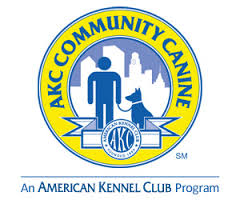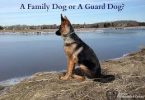AKC Community Canine is the advanced level of the AKC’s Canine Good Citizen program. Dogs who pass the the AKC Community Canine test earn the official AKC Community Canine title that is designated by the letters “CGCA” on the dogs title record.
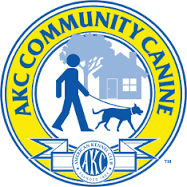
CGC tests are most often tested in a ring and situations are simulated, the AKC Community Canine test is done in real situations including at shows, classes and in the community.
There is no age requirement for dogs taking the CGCA test. However, before taking the test, dogs must have a CGC test on record at AKC.
There are ten test items for the Community Canine test. To pass the test and receive a certificate, dogs must pass all 10 items on the test.
 Item#1-Dogs stands, sits or lies down and waits under control while the owner sits at a registration table and fills out paperwork or if the test is done in the community,the dog waits while the owner sits and has a snack or visits with another person, an example would be at a park.
Item#1-Dogs stands, sits or lies down and waits under control while the owner sits at a registration table and fills out paperwork or if the test is done in the community,the dog waits while the owner sits and has a snack or visits with another person, an example would be at a park.
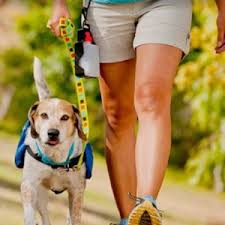 Item#2-Dog walks on a loose leash in a natural situation (not in a ring) and does not pull the owner. You and your dog are required to make a left turn, right turn, make a stop and walk at both a slow and fast pace.
Item#2-Dog walks on a loose leash in a natural situation (not in a ring) and does not pull the owner. You and your dog are required to make a left turn, right turn, make a stop and walk at both a slow and fast pace.
 Item#3-Dog walks on a loose leash through a crowd at a show or in class, not in a ring. In the community, the dog walks on a sidewalk, through a crowd at a community fair, park, on a trail or through a busy hallway, etc.
Item#3-Dog walks on a loose leash through a crowd at a show or in class, not in a ring. In the community, the dog walks on a sidewalk, through a crowd at a community fair, park, on a trail or through a busy hallway, etc.

Item#4-Dog walks past distractions and does not pull. This item may be tested along with #3 if there are dogs in the crowd. Dog walks by other dogs in a crowd at 2 ft. apart at a show or in a class. In the community, dog walks by other dogs on a trail, sidewalk or hallway.
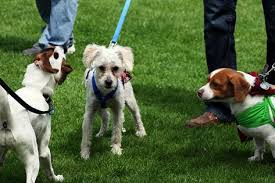 Item#5-Sit Stay in a small group with three other people with dogs. Owners and dogs are in an informal circle while owners have a conversation. Dogs are all on the owners left side, on leash, 3 ft. apart for at least 30 seconds.
Item#5-Sit Stay in a small group with three other people with dogs. Owners and dogs are in an informal circle while owners have a conversation. Dogs are all on the owners left side, on leash, 3 ft. apart for at least 30 seconds.

Item#6-Dog allows person who is carrying something (backpack, computer bag, etc.) to approach and pet it. Evaluator will ask owner “May I pet your dog?” Item is then placed on the ground or floor before person pets the dog.
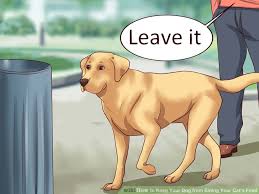 Item#7-“Leave It” Dog walks by food and follows owners instruction to “Leave It”. This can be food placed by the evaluator on the floor or on the ground in a food dish with a wire cover as in Rally.
Item#7-“Leave It” Dog walks by food and follows owners instruction to “Leave It”. This can be food placed by the evaluator on the floor or on the ground in a food dish with a wire cover as in Rally.
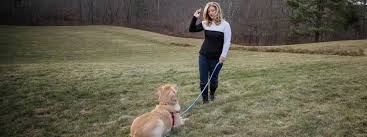 Item#8-Down or sit/stay at a distance. Owner can choose either a down or sit. Dog is on a 20 foot line, owner walks away with their back to the dog, picks up an item (shopping or training bag, clipboard, folder, etc. )which is placed on either the floor, in a chair or on the ground by the evaluator and returns to the dog.
Item#8-Down or sit/stay at a distance. Owner can choose either a down or sit. Dog is on a 20 foot line, owner walks away with their back to the dog, picks up an item (shopping or training bag, clipboard, folder, etc. )which is placed on either the floor, in a chair or on the ground by the evaluator and returns to the dog.
 Item #9-Recall with distractions present (coming when called). Handler goes out 20 feet (off center) and calls their dog. Dog is on a 20 foot line from previous exercise.
Item #9-Recall with distractions present (coming when called). Handler goes out 20 feet (off center) and calls their dog. Dog is on a 20 foot line from previous exercise.
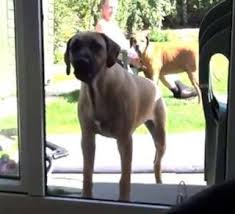 Item#10-Dog will sit or stand stay (owners choice) while owner enters or exits a doorway or narrow passageway. Owner calls dog through the door when ready. Owner may choose to send the dog through first and have the dog wait for the owner, or, the owner may choose to have the dog go through the doorway at the owners side. Whichever method is used, the dog must not pull the owner and must be under control. Think of the owner having the leash in one hand and a cup of coffee in the other. The doorway or gate can be real or simulated with ring gates, two chairs, or a natural passageway.
Item#10-Dog will sit or stand stay (owners choice) while owner enters or exits a doorway or narrow passageway. Owner calls dog through the door when ready. Owner may choose to send the dog through first and have the dog wait for the owner, or, the owner may choose to have the dog go through the doorway at the owners side. Whichever method is used, the dog must not pull the owner and must be under control. Think of the owner having the leash in one hand and a cup of coffee in the other. The doorway or gate can be real or simulated with ring gates, two chairs, or a natural passageway.

